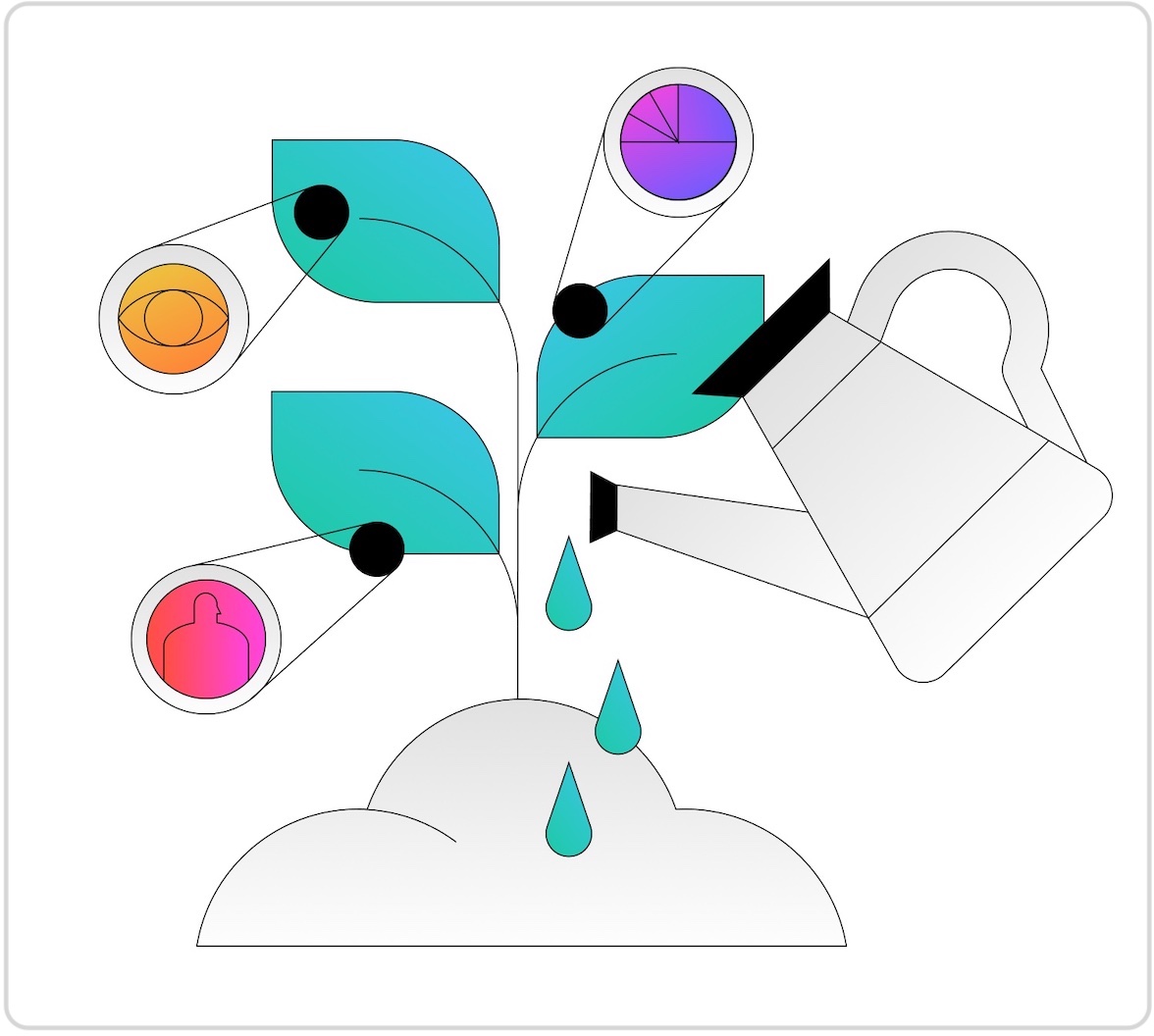Digital interactions are increasingly dynamic as brands accelerate digitization - adding more digital channels and services to cater to consumer demands for convenient and seamless access to services from anywhere. This reality has fueled an explosion of data being collected across a wide array of channels and customer data repositories, which not only makes it difficult for marketing teams to get a single view of customers but also makes it challenging to trust the accuracy of the data.
When customers cannot be accurately identified, this skews analytics and impedes true understanding of customers, their preferences, and behaviors across all digital properties, which is critical to driving adoption and customer lifetime value. This has sparked a growing need to bridge the gap between marketing and Customer Identity & Access Management (CIAM), combining identity and marketing to create a holistic picture of user behaviors.
Breaking down silos with customer data platforms (CDPs)
Brands collect customer data across various channels (web, mobile) and systems (martech, eCommerce, customer care) with the goal of extracting insights to enrich the experience. Unfortunately, these customer data sources act as islands creating siloed views of customers, impacting the ability to effectively analyze and personalize the experience.
Centralizing customer data is the first step toward fueling the understanding of customers. Today, organizations are turning to customer data platforms (CDPs), which serve as master customer data stores. CDPs aggregate customer data across multiple channels and repositories, unifying previously disparate data silos to create unified customer profiles — the customer 360.
CDPs enable marketing teams to optimize the timing and targeting of offers, communication, and engagement activities by allowing the analysis of behavior across the customer journey. However, without a proper identity verification source, the legitimacy of the data comes into question.
Because CDPs aggregate previously collected data, it is difficult to know how valid the data is. The data may have been collected in a channel without gaining proper consent, the customer's identity may still be unknown (e.g., anonymous profiles), and/or the contact details have become outdated or were never validated.
Source of truth: Customer Identity and Access Management
Traditionally, CIAM has been a form of front-line security. However, it has reciprocal value across an organization as it is the front door to your digital services and products. CIAM is how customers adopt and engage with your digital products and services and gives you the means to accurately identify, collect, analyze and secure their data.
CIAM provides a unified interface for customers to sign up and sign in to your products and services - it is often the first touchpoint at which customers become identifiable. The data that is collected during these events is not only verified through authentication events but can span deterministic data, customer data brought in from other identity providers (e.g., social or enterprise repositories), the devices being used to access services, and the location services are being consumed from.
This valuable source of truth can be used to connect customer identity across all digital services, including their preferences, usage patterns, and consent.
CIAM and CDPs: Powering the marketing funnel
Investment in a CDP is made to better understand customers in order to drive conversions, ROI, customer retention, engagement, loyalty, funnel optimization, and customer experience. Enriching the customer profile with essential identity data across all applications can further accelerate the value of a CDP investment.
Through bi-directional synchronization with CDPs and other martech systems, CIAM data can be used to:
- Connect anonymous profiles to known customers by providing verified identity data at signups, such as IP address and device identifiers. The CDP can ingest this data and correlate it to a previously unknown profile. With third-party cookies going away and mobile devices limiting app tracking, this capability is essential for marketers looking to understand their customers’ behaviors across their pre and post-account creation activity and engagement regardless of application or channel.
- Enrich user profiles with accurate, customer-provided data. CIAM verifies users’ identities during registration and login, using identifiers such as email or mobile number. If the CDP detects a change/update, it will update the user profile with the new data.
- Power analytics with actionable identity data spanning how, where, and when users are signing up and signing into applications. CIAM plays a central role in the conversion funnel. The acquisition is tied to signup, and retention is tied to the login experience associated with your digital services. Not having a unified view of these processes and a way to analyze and take action on this data can lead to friction, which creates frustration and leads to lost conversions. By providing a CDP with this data, which in turn is shared with martech and analytics systems, markets can develop a deeper understanding of customers’ behaviors and transaction patterns to identify threats, points of friction, and opportunities for segmentation.
Auth0: Unifying and powering existing tech stacks with identity data
At Auth0, we position ourselves as an essential component in the end-to-end digital relationship. Auth0 serves as a foundation to unify an organization's existing tech stack as it integrates and enables a broad ecosystem of technologies and applications spanning applications, APIs, martech, content management, fraud, privacy, sales, and customer care systems.
Essentially Auth0 acts as a single source of truth for identity data spanning:
- Identifiers a user is providing when creating an account
- Locales, devices, and IPs that the user is logging in from
- Number of times a user is logging in
- Applications the user is logging in to
- Risk profile of the login that the user completed
- Verified email or the phone number used during the authentication challenge
By sharing this data with downstream systems, Auth0 can boost business outcomes across an entire organization, for instance:
- Marketing teams to power analytics to better gauge conversion and derive benefits from clean, trusted data.
- Customer support agents to leverage login activity to better service customers.
- Security teams to utilize transactional data to diagnose a potential account breach.
We are constantly adding partner integrations to our Marketplace to allow our customers to power their tech stack easily and quickly with identity data. Tealium recently launched a new CDP integration on the Auth0 Marketplace - Tealium User Login. This integration enables marketing and digital teams to leverage Auth0 identity data to connect anonymous profiles to known users and enrich user profiles with accurate and up-to-date data.
As we continue to grow our CDP footprint, our partner integrations will have an emphasis on helping consumer businesses better understand customers and drive conversion. These pre-built integrations, like Tealium, allow customers to configure and deploy a CDP without employing developers to build a custom solution.
Be on the lookout as our partners continue to build out new CDP integrations in the Auth0 Marketplace.
About the author

Liz Rivera
Senior Product Marketing Manager, CIAM
